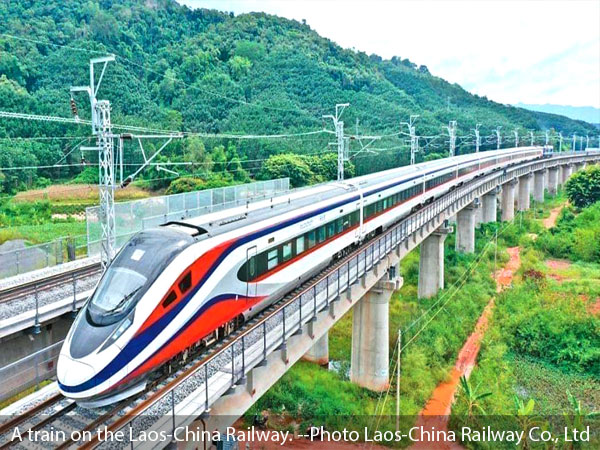Rail operator asks for government’s help to resolve problems
The Laos-China Railway Co., Ltd. (LCRC) has outlined various problems that the government needs to address in relation to railway operations, with the issues being raised during a visit by Deputy Prime Minister Dr Sonexay Siphandone.
One of these is the need to expedite the authorisation of duty-free imports needed by the LCRC.
The company also asked that the Bank of the Lao PDR arrange for the sale of train tickets, and transport payments and other fees paid in foreign currency, to be based on the market exchange rate.
LCRC also asked the government to counter negative publicity concerning the railway as well as for assistance with other issues, according to the Vientiane Mai newspaper.
 |
| |
Since the railway opened for service at the beginning of December, more than 113,800 people have taken train trips. Each day at least 1,700 people make trips, while on some days the number has exceeded 2,800.
To date, passengers have generated more than 12 million yuan in revenue, equal to 21 billion kip.
People have flocked to the railway because travel is convenient and fast, while tickets are not expensive.
The lowest ticket price is 40,000 kip and the highest is 529,000 kip, depending on the distance travelled and the class of seat.
In addition, the railway has carried more than 139,000 tonnes of freight, generating revenue of more than 48 million yuan (86 billion kip).
The railway has carried a huge amount of freight from China as companies in the country sought to take advantage of the speedy new transport link.
Seven of the railway’s planned 10 passenger stations are operating in Vientiane, Phonhong, Vangvieng, Luang Prabang, Xay, Natuey and Boten.
Of the seven planned freight stations, three are currently operational in Vientiane, Vangvieng and Natuey.
Construction of the US$5.986 billion (37.4 billion yuan) railway began in 2016. The rail link is a strategic part of China’s Belt and Road Initiative and Laos’ plans to transform the country from being landlocked to a land link within the region.
Use of the railway cuts the cost of transport through Laos by 30-40 percent compared to travel by road.
The four provinces through which the railway passes are anticipating an influx of visitors given the improved access and are preparing for a surge in numbers by improving tourist attractions and associated facilities.
By Times Reporters
(Latest Update February 10, 2022) |